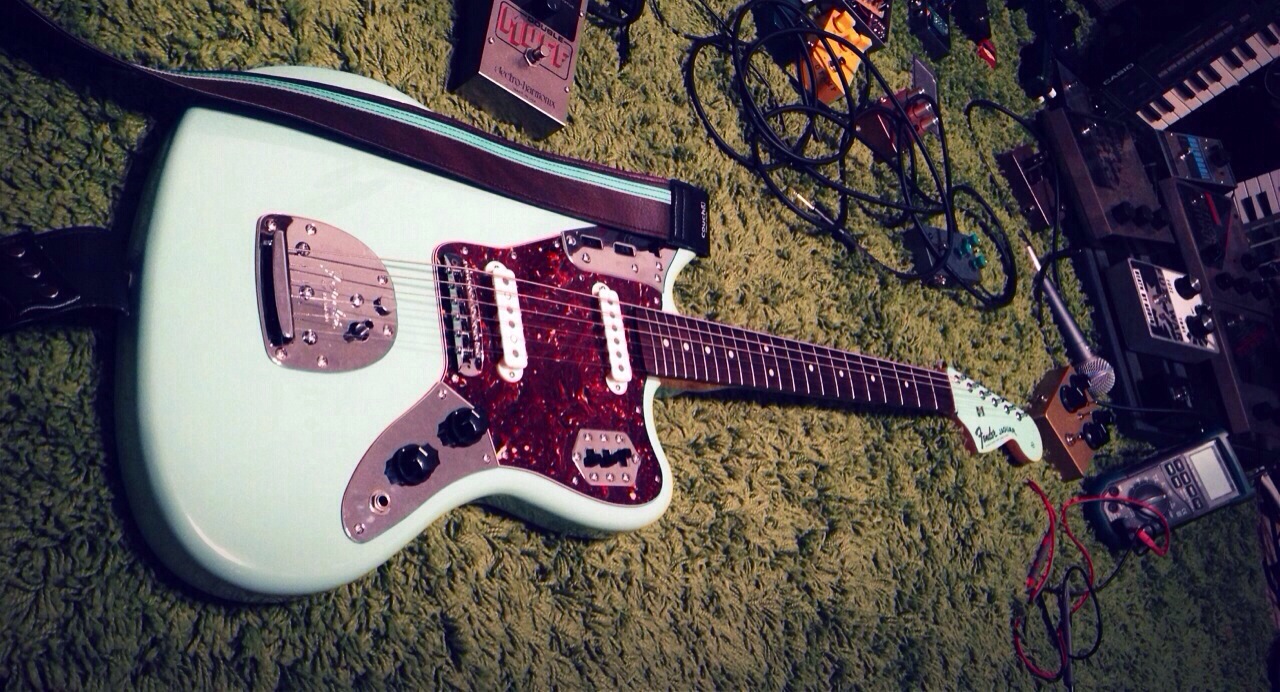These are notes I found on the Fender Jaguar but it should work for the Jazzmaster also.
Action is a key factor in how a guitar plays. Simply put, action is the distance between the strings and the frets. A lot of people will tell you that the best setup is to have the lowest action possible without buzzing, but this is not necessarily true. It is true that a guitar with lower action is easier to play, but it often does not sound as good. Different styles of music use different actions. It is best to experiment with it until you feel you’ve reached the right height for your playing style. To measure action, you’ll need a ruler that will measure 1/64 of an inch (or millimeters if you’re outside of the US), and an allen key that will fit into the saddle/bridge posts. Here’s how to set up action:
- With all the strings up to pitch in standard tuning, place the ruler on the 17th fret, and measure the distance between the bottom of the low E string and the top of the fret.
- Normally, action should be anywhere from 4/64″ (1.5875 mm) to 8/64″ (3.175 mm), depending on what you think feels right. I myself compromise by using an action of around 6/64″.
- On a Jaguar/Jazzmaster, if you feel the action is too low or too high, you can roughly adjust it by turning the allen screws in the bridge posts. Tightening will raise the bridge; loosening will lower it.
- Once you get it to about the right height, on many Fender guitars (including the Jag/JM), you can fine tune the height of each individual saddle. Once again, tighten the allen screws on the saddle to raise it, loosen them to lower it.
- After obtaining the right height, repeat the process for each string.
This information was taken from Ranger’s Guitars, which seems to be a dying website. This is the reason I re-blogged it to save the information. I liked his breakdown and simplicity of the instructions.







